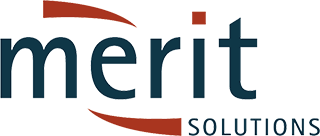In a recent breakfast forum, we continued our discussion of learning and development in times of limited budgets. One of the key challenges raised in the discussion was the issue of sustainability – sustaining a learning and development culture in times of resource constraint.
After sharing their own experience of on-the-job learning and development, participants identified a number of challenges they faced in the current environment. These ranged from resource constraints (budgets, time, facilities, technology & people/skills) to issues of rural, remote and national delivery. The difficulties of achieving a sustainable learning and development culture were seen to be compounded by moves to centralise relevant functions resulting in a lack of knowledge and understanding of the local scene.
In times of resource constraint, there is a tendency to withdraw, to go one out or to curtail networking. There is also a strong inclination to hoard resources and look after your own unit or team. This tendency to isolation is the opposite of what is required because it deprives your team of the motivation inherent in collaboration and the synergies that can occur through sharing and engagement with others who have different orientation and perspectives (a foundation principle of action learning).
In discussing the issue of sustainability of a learning and development culture in times of resource constraint, participants identified ten key strategies:
1. Developing professionalism and quality delivery
Sustaining a learning and development culture requires a focus on professionalism and an ethos of quality service delivery. Don Schön, author of The Reflective Practitioner, stated that the ability to reflect on action and in-action, was the defining characteristic of a professional. Thus to build professionalism and quality, approaches such as debriefs, reviews, customer surveys and critical incident analysis can generate the desired skill levels and set the bar for a learning and development culture. Even meetings can be a source of reflection and a means to model and build professionalism in a way that then permeates daily operations.
2. Linking to future direction and organisational strategy
Organisational history has shown that units that are not demonstrably linked to the achievement of organisational goals are the first to be cut in times of downsizing and resource constraint. Increasing your unit’s focus on the future direction of the organisation and identified goals and strategy will add to your sustainability and the development of relevant knowledge and skills. Where there is an absence of clear direction from senior management, it is always possible to make use of the opportunity space to progress the organisation in the light of your own understanding of environmental factors/demands and past history. You can’t stand still – if you are not moving forward, you are moving backward in terms of learning and development.
3. Promoting the sharing of knowledge and skills in your work area
In a previous Breakfast Seminar, we looked at ways to achieve knowledge sharing in the workplace. This requires a learning mindset and active involvement of staff in identifying ways to share as well as participating in the sharing process.

4. Increasing your awareness and utilisation of the knowledge and skills of staff
Often we tend to view people in our organisation through the frame of their level or their role description. This perspective is necessarily limiting and restricts our ability to make proper use of individual’s knowledge and skills for the advancement of the organisation and their personal development. We often miss the rich tapestry of the lives of our staff because we are so pressured by resource constraints. However, knowing more about the skills and knowledge of our staff can provide solutions to resource problems.
One way to build understanding of the capabilities of our staff, is to use an approach called “appreciative inquiry”. This involves active listening to a staff member as they describe something they have achieved that they are proud of (whether at work, in the community, through study, at sport or in any other arena). They describe the situation, the challenges involved, their actions and outcomes and what knowledge, skills or personal qualities they brought to bear to achieve the outcomes. This can be followed by a mutual exploration of how those skills, knowledge and personal qualities can be applied in the workplace. In large organisations, this can be added to talent databases but most teams will find hidden gems that can add to their collective capacity.
5. Searching out resource people
Often we are blinkered by the boundaries of our own unit or division. However, within any medium to large-sized organisation there are numerous resource people from fields as diverse as marketing, finance, and stakeholder management. An approach for assistance in the form of a request for knowledge sharing can achieve a positive response and the relevant professional will often see the request as an opportunity to spread their “message” or share their professional orientation, thus building understanding, rapport and breaking down silos.
6. Building external alliances and networks
These alliances and networks can range from informal strategic linkages to professional associations. One of the participants in the Forum talked about her efforts to sustain a network developed amongst similar organisations in the not-for-profit sector. This network enables participating organisations to share resources, facilities and knowledge. Exchange networks exist to give people opportunities in another organisation. Where a network does not exist to meet your specific (professional) needs, then you can be the initiator of a new network.
Our own experience in developing the Action Learning, Action Research Association (ALARA) shows what the foundation work of ten like-minded people can achieve over time. ALARA was formed in 1991 in Brisbane and has an international membership and journal, conducts Australasian and international conferences, local member workshops & seminars and has conducted seven World Congresses including in places as diverse as Bath (UK), Cartagéna (Colombia), Pretoria (South Africa) and Groningen (Netherlands). ALARA was born of the dedication of like-minded people who were faced with very strong organisational opposition to the advancement of action learning and action research in their respective workplaces. Four Merit Solutions consultants have been awarded honorary, lifetime membership because of their contribution to the development of ALARA over many years.
7. Developing a Community of Practice (CoP)
A Community of Practice (CoP) is a group of people linked by virtue of their trade, profession or craft who meet regularly to share information and experiences. Communities of Practice can develop across organisational boundaries, within an industry or even across industries. The binding factors are a common area of knowledge and/or skill, willingness to share and a desire to grow and develop. Communities of Practice offer emotional support as well as personal and professional development. TAFE has been the supporter of Communities of Practice within a wide range of industries.
8. Self-development and self-preservation
A critical element in sustaining a learning and development culture is your own personal development and self-preservation. In times when resources are limited and demands are high, there is a tendency to over-work with consequent costs to health and wellness. When your personal energy resources are depleted, frequent blockage to goal achievement can lead to depression and burnout.
In these times, developing mindfulness is important as a way to achieve calm, clarity and focus. Mindfulness also assists you to keep things in perspective and to release the creativity that enables you to find innovative solutions to pressing issues. When you are well-grounded, you can also summon the courage to do the things you need to do to preserve your own integrity and energy and to build and sustain a learning and development culture. There are many paths to mindfulness and you have to find your own way to develop this state for your own wellness and self-preservation. Andy Puddicombe, when discussing mindfulness, offers some very pertinent advice:
We can’t change everything that happens in life – but we can change the way we experience it.
9. Introducing Blended Learning
Blended learning typically involves melding online learning with face-to-face learning. The need to meet the learning and development needs of rural, regional or remote staff has meant that online learning and other flexible delivery methods are no longer an optional extra but a business necessity. This need is compounded in times of resource constraint affecting training and travel budgets. One of the key lessons learned by flexible learning leaders in the VET sector was that online learning involves more than transfer of offline material to a digital form. Online learning has its own inherent pedagogy and should not be embraced simply as a cost-saving measure. There are clear development costs and strategic and operational considerations. One of the proven key success factors of online learning is the level of interactivity achieved – amongst participants and between participants and their online facilitator. One of the major impediments to the progress of online learning has been a lack of people with online facilitation skills which are developed through practice and coaching support. Utilising your own content for online learning can certainly help to reduce the initial development costs.
10. Action Learning
Action learning, developed in the mid-1940s by Reg Revans, pre-dates Communities of Practice but has a lot in common with the collaborative ethos of the CoP. The characteristics that tend to differentiate action learning from a Community of Practice are (1) a focus on taking action and learning through action, (2) the diversity of participants, (3) emphasis on “supportive challenge” and (4) explicit valuing of reflection on action. Often the emphasis in developing action learning groups is diversity through skill mix – the focus is not commonality of profession, trade or craft but the necessary mix of people to achieve an action outcome.
Action learning groups can involve people from different organisations working on quite distinct projects (each person having their own project with action outcomes). This approach can be embedded in the practices of intact work teams, project teams or special task forces. A growing use of action learning is the development of learning partnerships between suppliers and purchasers, for example, with IT implementations. Individuals, too, who are interested in their own personal and professional development and in offering mutual support, can form their own personal action learning set that operates outside their organisational boundaries.
Conclusion
Central to sustainability was the theme of sharing – a willingness to invest time and effort in collaborating with others across your own organisation and in different organisations to provide mutual support for goal achievement. This was an inspiring and reassuring conclusion about the power of learning for many of us who are facing unprecedented challenges in our organisations and personal careers.
